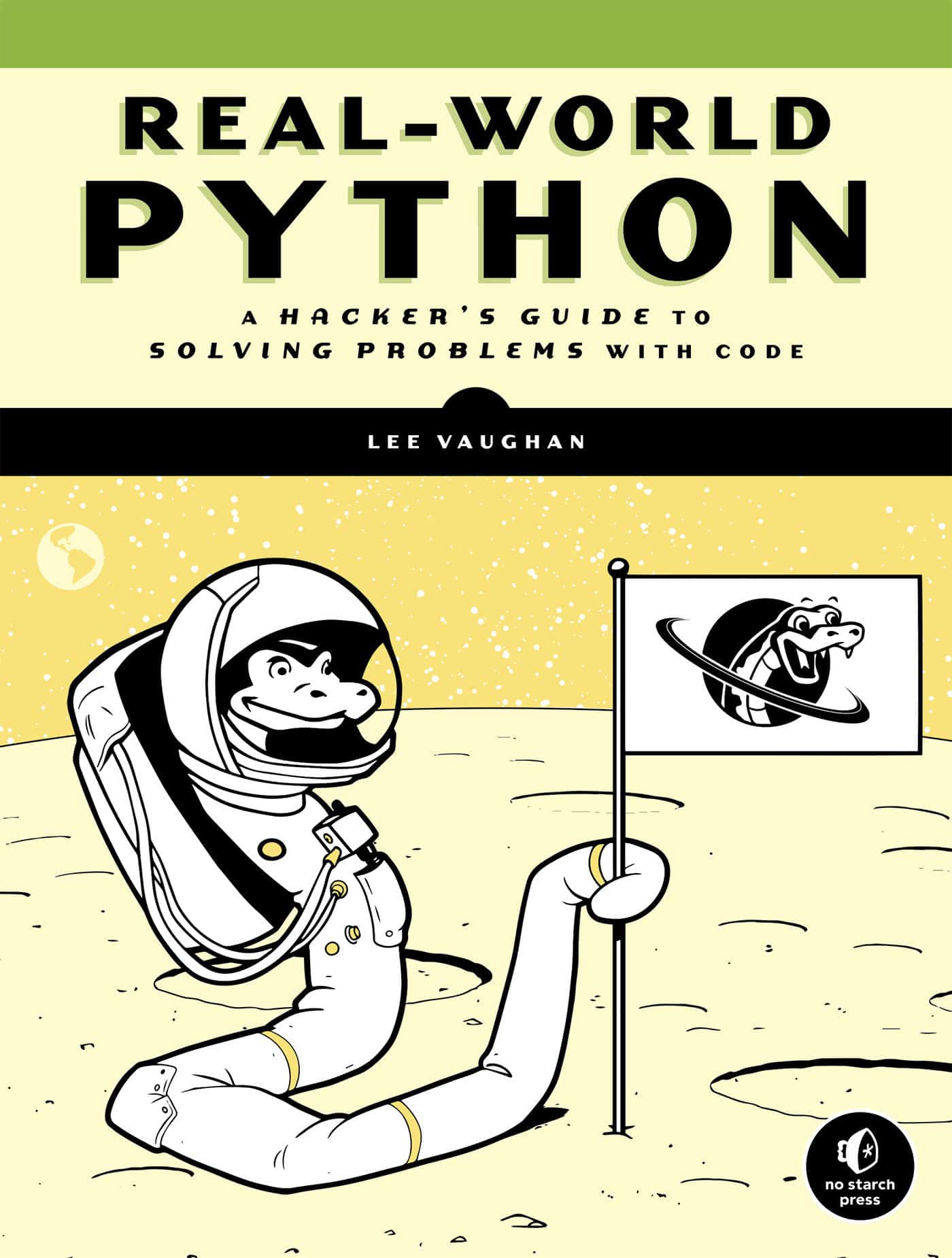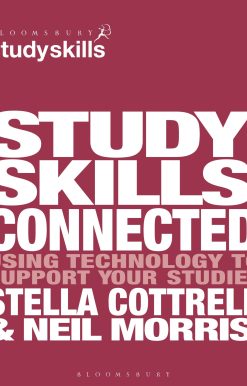Real-World Python: A Hacker’s Guide to Solving Problems with Code
39.99 JOD
Please allow 2 – 5 weeks for delivery of this item
Description
A project-based approach to learning Python programming for beginners. Intriguing projects teach you how to tackle challenging problems with code.You’ve mastered the basics. Now you’re ready to explore some of Python’s more powerful tools. Real-World Python will show you how.Through a series of hands-on projects, you’ll investigate and solve real-world problems using sophisticated computer vision, machine learning, data analysis, and language processing tools. You’ll be introduced to important modules like OpenCV, NumPy, Pandas, NLTK, Bokeh, Beautiful Soup, Requests, HoloViews, Tkinter, turtle, matplotlib, and more. You’ll create complete, working programs and think through intriguing projects that show you how to:Save shipwrecked sailors with an algorithm designed to prove the existence of GodDetect asteroids and comets moving against a starfieldProgram a sentry gun to shoot your enemies and spare your friendsSelect landing sites for a Mars probe using real NASA mapsSend unbreakable messages based on a book codeSurvive a zombie outbreak using data scienceDiscover exoplanets and alien megastructures orbiting distant starsTest the hypothesis that we’re all living in a computer simulationAnd more!If you’re tired of learning the bare essentials of Python Programming with isolated snippets of code, you’ll relish the relevant and geeky fun of Real-World Python!
Additional information
| Weight | 0.69 kg |
|---|---|
| Dimensions | 1.91 × 17.78 × 4.20 cm |
| by | |
| Format | Paperback |
| Language | |
| Pages | 360 |
| Publisher | |
| Year Published | 2020-11-5 |
| Imprint | |
| Publication City/Country | USA |
| ISBN 10 | 1718500629 |
| About The Author | Lee Vaughan is a programmer, pop culture enthusiast, educator, and author of Impractical Python Projects(No Starch Press). As a former executive-level scientist at ExxonMobil, he spent decades constructing and reviewing complex computer models, developed and tested software, and trained geoscientists and engineers. |
"Python programmers with a little bit of experience, looking for a fun challenge that relates to real-world examples, should read [this book]."—Geek Tech Stuff"I recommend this book for all Python learners!" —Kelly Paredes, Teaching Python podcast"This is the most amazing book anyone could pick up if they are unsure about what machine learning job they should focus on."—Ian Mizer, Atlanta Python Programmers Group"Read this book and do the work. You will find yourself building programs that address real-world problems and readying yourself to attack similarly challenging problems in whatever field you are working." —Sandra Henry-Stocker, Linux journalist, NetworkWorld (IDG) |
|
| Table Of Content | IntroductionChapter 1: Saving Shipwrecked Sailors with Bayes’ RuleChapter 2: Attributing Authorship with StylometryChapter 3: Summarizing SpeechesChapter 4: Sending Super Secret MessagesChapter 5: Finding PlutoChapter 6: Winning the Moon Race with Apollo 8Chapter 7: Selecting Martian Landing SitesChapter 8: Detecting Distant ExoplanetsChapter 9: Identifying Friend or FoeChapter 10: Finding a Safe SpaceChapter 11: Charting ExoplanetsChapter 12: Are we Living in an Alien Simulation?Appendix: Answers to the practice problemsIndex |
| Excerpt From Book | ATTRIBUTING AUTHORSHIP WITH STYLOMETRYStylometry is the quantitative study of literary style through computational text analysis. It’s based on the idea that we all have a unique, consistent, and recognizable style to our writing. This includes our vocabulary, our use of punctuation, the average length of our sentences and words, and so on.A common application of stylometry is authorship attribution. Do you ever wonder if Shakespeare really wrote all his plays? Or if John Lennon or Paul McCartney wrote the song “In My Life”? Could Robert Galbraith, author of A Cuckoo’s Calling, really be J. K. Rowling in disguise? Stylometry can find the answer!Stylometry has been used to overturn murder convictions and even helped identify and convict the Unabomber in 1996. Other uses include detecting plagiarism and determining the emotional tone behind words, such as in social media posts. Stylometry can even be used to detect signs of mental depression and suicidal tendencies.In this chapter, you’ll use multiple stylometric techniques to determine whether Sir Arthur Conan Doyle or H. G. Wells wrote the novel The Lost World.Project #2: The Hound, The War, and The Lost WorldSir Arthur Conan Doyle (1859–1930) is best known for the Sherlock Holmes stories, considered milestones in the field of crime fiction. H. G. Wells (1866–1946) is famous for several groundbreaking science fiction novels including The War of The Worlds, The Time Machine, The Invisible Man, and The Island of Dr. Moreau.In 1912, the Strand Magazine published The Lost World, a serialized version of a science fiction novel. It told the story of an Amazon basin expedition, led by zoology professor George Edward Challenger, that encountered living dinosaurs and a vicious tribe of ape-like creatures. Although the author of the novel is known, for this project, let’s pretend it’s in dispute and it’s your job to solve the mystery. Experts have narrowed the field down to two authors, Doyle and Wells. Wells is slightly favored because The Lost World is a work of science fiction, which is his purview. It also includes brutish troglodytes redolent of the morlocks in his 1895 work The Time Machine. Doyle, on the other hand, is known for detective stories and historical fiction.THE OBJECTIVEWrite a Python program that uses stylometry to determine whether Sir Arthur Conan Doyle or H. G. Wells wrote the novel The Lost World.THE STRATEGYThe science of natural language processing (NLP) deals with the interactions between the precise and structured language of computers and the nuanced, frequently ambiguous “natural” language used by humans. Example uses for NLP include machine translations, spam detection, comprehension of search engine questions, and predictive text recognition for cell phone users. The most common NLP tests for authorship analyze the following features of a text:• Word length A frequency distribution plot of the length of words in a document• Stop words A frequency distribution plot of stop words (short, noncontextual function words like the, but, and if)• Parts of speech A frequency distribution plot of words based on their syntactic functions (such as nouns, pronouns, verbs, adverbs, adjectives, and so on)• Most common words A comparison of the most commonly used words in a text• Jaccard similarity A statistic used for gauging the similarity and diversity of a sample setIf Doyle and Wells have distinctive writing styles, these five tests should be enough to distinguish between them. We’ll talk about each test in more detail in the coding section. To capture and analyze each author’s style, you’ll need a representative corpus, or a body of text. For Doyle, use the famous Sherlock Holmes novel The Hound of the Baskervilles, published in 1902. For Wells, use The War of the Worlds, published in 1898. Both these novels contain more than 50,000 words, more than enough for a sound statistical sampling. You’ll then compare each author’s sample to The Lost World to determine how closely the writing styles match.To perform stylometry, you’ll use the Natural Language Toolkit (NLTK), a popular suite of programs and libraries for working with human language data in Python. It’s free and works on Windows, macOS, and Linux. Created in 2001 as part of a computational linguistics course at theUniversity of Pennsylvania, NLTK has continued to develop and expand with the help of dozens of contributors. |
Only logged in customers who have purchased this product may leave a review.






Reviews
There are no reviews yet.